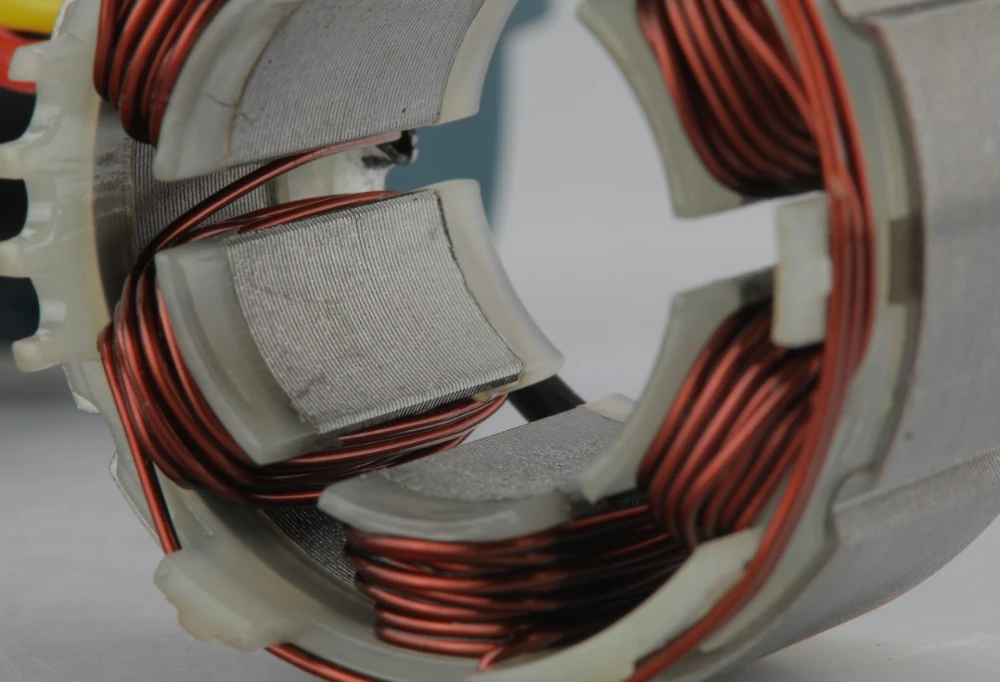Way to Commutate a BLDC Motor
2024-06-27 16:58:29
Brushless DC (BLDC) motors have gained substantial popularity in various applications due to their high efficiency, long life, and low maintenance requirements. However, to efficiently operate a BLDC motor, an essential process known as commutation is required. This article delves into the effective ways to commutate a BLDC motor, ensuring optimal performance in its applications.
Introduction to BLDC Motor Commutation
Before diving into the various commutation techniques, let's delve deeper into the concept of BLDC motor commutation. Unlike brushed DC motors where mechanical brushes perform commutation, BLDC motors require electronic commutation due to their brushless configuration. Commutation in BLDC motors is the process of switching current in the motor's windings to produce a rotating magnetic field, which in turn drives the DC motor. BLDC motors rely on electronic commutation, where the motor's current flow is precisely controlled to maintain a smooth rotation. Commutation involves switching the current flow in the motor's windings at specific intervals to generate a rotating magnetic field, which interacts with permanent magnets to produce torque.

Trapezoidal Commutation
Trapezoidal commutation, also known as six-step commutation, is characterized by the switching of current between the phases of the motor in a sequence that creates a trapezoidal shape when the voltage across the motor windings is plotted against time. By using this standard motor commutation sequence, the motor controller can employ a high-frequency PWM signal to effectively lower the average voltage experienced by the motor, thereby adjusting the motor speed. This setup increases design flexibility by enabling a single voltage source to power a wide variety of motors, even when the DC voltage source is significantly higher than the motor's rated voltage. To maintain the efficiency advantage over brushed technology, a tight control loop must be established between the motor and the controller. Feedback technology plays a crucial role in this, as the controller needs to constantly monitor the exact position of the stator relative to the rotor to ensure precise motor control. Any misalignment or phase shift can lead to unexpected behavior and performance issues. Various methods, such as Hall effect sensors, encoders, or resolvers, are commonly used for implementing feedback in BLDC motor commutation. Some applications also utilize sensorless commutation techniques for feedback purposes. This method is simpler and more cost-effective than sinusoidal commutation but results in higher torque ripple, which may lead to increased noise and vibration.
Implementation
- Trapezoidal commutation requires the use of Hall Effect sensors or an encoder to determine the rotor's position and accordingly switch the current in the motor phases.
- This method is best suited for applications that do not require high precision or smooth operation.
Sinusoidal Commutation
Sinusoidal commutation provides a smoother and more precise control over the motor by applying a sinusoidal current to the motor phases. This reduces torque ripple significantly, resulting in quieter operation and lower vibration when compared to trapezoidal commutation.
Implementation
- Implementing sinusoidal commutation is more complex because it requires advanced algorithms to accurately generate sinusoidal waveforms that are in sync with the rotor's position.
- This is often achieved through Field-Oriented Control (FOC) techniques, which provide superior efficiency and performance.
Sensorless Commutation
Beyond the basic trapezoidal and sinusoidal methods, there's a method known as sensorless commutation. This approach eliminates the need for position sensors and estimates the rotor position based on back-EMF (Electromotive Force) readings from the motor. Sensorless commutation can be applied with either trapezoidal or sinusoidal waveform strategies, providing a cost-effective and simplified solution. However, it may not be suitable for low-speed applications due to the difficulty in accurately estimating the rotor position at low speeds.
Choosing the Right Commutation Method
Application Requirements
The choice between trapezoidal commutation, sinusoidal commutation, or sensorless methods depends largely on the specific requirements of the application. Considerations include the need for precision, smooth operation, cost, and complexity.
Advantages and Limitations
- Trapezoidal Commutation: Best suited for cost-sensitive applications where high precision is not critical. It is straightforward to implement but may result in higher noise levels and vibration.
- Sinusoidal Commutation: Ideal for applications requiring smooth operation, high precision, and low noise. It offers superior performance but at a higher cost and complexity.
- Sensorless Commutation: Offers a good balance between cost and performance in applications where the precise rotor position information is not critical. It reduces the overall system complexity but may face challenges in low-speed environments.
Conclusion
In conclusion, effective commutation is crucial for maximizing the performance and efficiency of BLDC motors. The six-step commutation technique, utilizing Hall sensors, encoder feedback, or implementing sensorless algorithms, is widely used in BLDC motor applications. These techniques provide precise control over the motor's speed, torque, and position, enabling smooth operation and optimal performance. Whether through trapezoidal, sinusoidal, or sensorless methods, each commutation approach has its unique benefits and challenges. The choice of commutation method should align with the specific needs of the application, considering factors like cost, complexity, precision, and smooth operation.
See What Lunyee Can Do For You
Contact Us
- 8619149417743
- +86-0371-5562 0274
- [email protected]
- Zhengzhou, Henan Province, China
- Mon-Fri: 9:00 - 18:00




